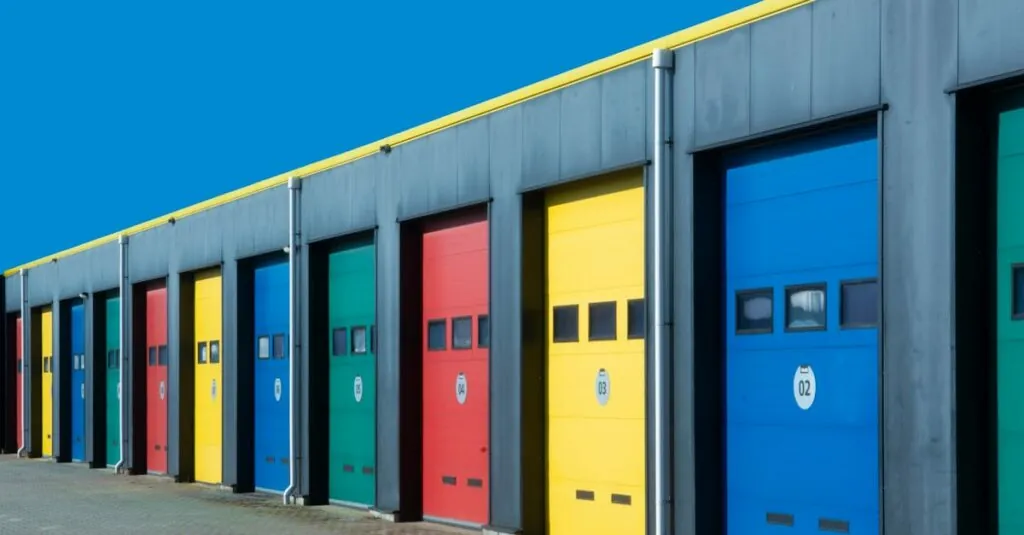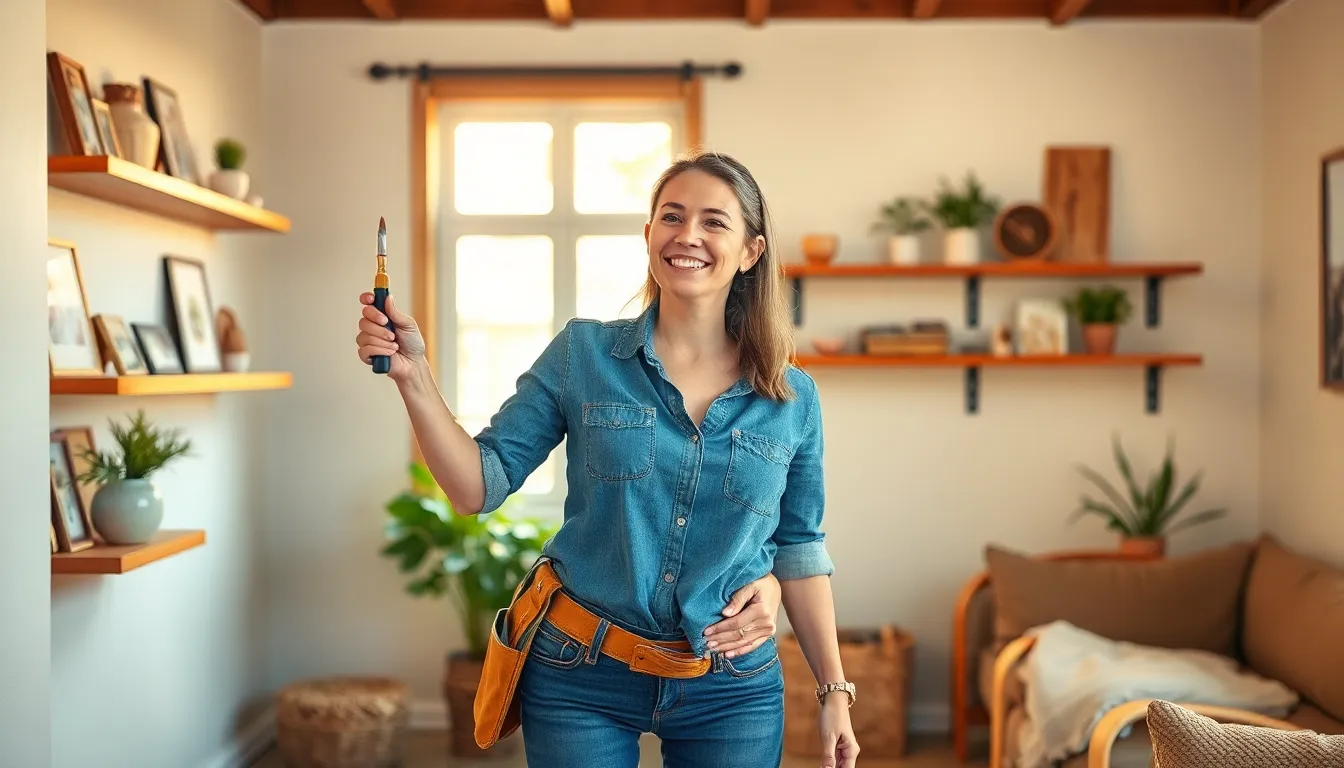When it comes to home upgrades, garage door replacement might not be at the top of the list, but it should be. A new garage door can boost curb appeal, enhance security, and even save on energy bills. Plus, who wouldn’t want to impress the neighbors with a door that opens smoother than a well-oiled machine?
Table of Contents
ToggleUnderstanding Garage Door Replacement
Garage door replacement plays a key role in home improvement. A new garage door enhances security, boosts curb appeal, and offers potential energy savings.
Importance of Garage Door Replacement
Replacing a garage door significantly upgrades home aesthetics. It provides a modern look and boosts property value. Enhanced safety measures deter break-ins, safeguarding belongings. Improved insulation decreases energy bills, making it an economical choice. Many homeowners notice an increase in neighborhood admiration with a stylish new garage door.
Signs You Need a Replacement
Visible wear and tear often indicates the need for replacement. Rust or dents can affect functionality and appearance. Unexpected noises during operation suggest underlying issues. Frequent breakdowns show that repairs may not be enough. Inefficient insulation leads to higher energy costs, prompting a change. If the door fails to open or close properly, immediate action is necessary.
Choosing the Right Garage Door
Selecting the right garage door involves understanding materials and styles that match a homeowner’s needs.
Materials and Types
Various materials offer different benefits. Steel doors provide durability and lower maintenance, while wood doors deliver a classic aesthetic but require more upkeep. Fiberglass doors combine lightweight properties with excellent insulation. Vinyl doors resist dents and scratches while offering energy efficiency. Consider sectional doors for versatility, roller doors for space-saving needs, or tilt-up doors for simplicity. Each type serves specific functionality and design preferences.
Style Considerations
A garage door’s style impacts overall curb appeal. Traditional raised panel doors match classic homes, while modern flush doors enhance contemporary designs. Carriage house styles provide a rustic charm, appealing to many homeowners. Color options should complement the home’s exterior, enhancing visual coherence. Windows on garage doors add charm and allow natural light; homeowners may choose either decorative or functional panes. Matching architectural details creates a cohesive look, elevating the home’s value and character.
The Replacement Process
Replacing a garage door involves several key decisions and steps, impacting functionality, aesthetics, and security. Homeowners can choose between DIY installation and hiring professionals based on their confidence and skill levels.
DIY vs. Professional Installation
DIY installation offers cost savings but demands significant time and expertise. Homeowners comfortable with tools may find it rewarding. However, safety concerns arise since garage doors weigh up to 400 pounds. Lack of experience can lead to mistakes that compromise functionality. On the other hand, professional installation ensures proper setup and adherence to local codes. Technicians understand potential complications, minimizing future issues.
Steps for Professional Replacement
Preparation is crucial for a smooth replacement. First, professionals assess the old door, checking for structural integrity and proper measurements. Next, they remove the existing door and tracks, ensuring a clean workspace. Afterward, installing the new door begins with mounting the track and securing hinges. Technicians then connect springs and cables, followed by testing the door’s operation. Final adjustments guarantee smooth operation. Clean-up is the last step, leaving the space tidy and functional.
Costs Involved in Garage Door Replacement
Replacing a garage door involves various costs that homeowners must consider. Understanding these expenses helps in budgeting for an upgrade.
Average Cost Breakdown
The average cost for garage door replacement ranges from $750 to $1,500, with labor and materials playing significant roles. Materials such as steel, wood, or fiberglass impact pricing, often averaging $300 to $1,200 for the door itself. Labor costs typically fall between $150 and $600, depending on the complexity of installation. Additional expenses may arise from extra features like insulation, windows, or smart garage door openers, each contributing to the overall investment.
Factors Affecting the Cost
Various factors influence the cost of garage door replacement. Door material type significantly impacts pricing, as steel is generally more affordable compared to wood. The door’s style also matters; specialty designs often carry higher costs. Geographic location can lead to price variations based on local labor rates and demand. Homeowners should factor in the need for any additional structural work related to the existing door frame or opener system, which may add expenses.
Maintenance Tips for New Garage Doors
Regular maintenance extends the lifespan of a new garage door. Start by inspecting the door for visible signs of wear, including cracks, rust, or dents. Perform lubrication on all moving parts, such as hinges, rollers, and tracks. This reduces friction and helps maintain smooth operation.
Cleaning the garage door is essential for aesthetics and functionality. Use mild detergent and a soft cloth to remove dirt and grime. Rinsing with water prevents residue buildup, which can lead to damage.
Adjust the door’s balance by testing its operation. Disconnect the opener, then manually lift the door halfway. If it stays in place, the balance is correct; if it moves, adjustments are necessary. Misalignment can strain components, leading to costly repairs.
Inspect the weatherstripping around the door regularly. Ensure it seals correctly to prevent drafts and water intrusion. Replacing damaged weatherstripping enhances insulation and energy efficiency.
Testing the safety features is crucial for preventing accidents. Check the auto-reverse function by placing a small object in the door’s path. The door should reverse upon contact. If it doesn’t, recalibrate the settings or consult a professional.
Check for any unusual noises during operation. Grinding, squeaking, or banging could signal maintenance needs. Identifying issues early can prevent costly complications.
Finally, schedule professional inspections annually. Experienced technicians can detect hidden problems and suggest necessary repairs. Regular maintenance ensures a garage door remains safe, efficient, and visually appealing over time.
Upgrading to a new garage door is a smart investment for any homeowner. It not only enhances the property’s appearance but also improves security and energy efficiency. By recognizing the signs that indicate a need for replacement and understanding the various materials and styles available, homeowners can make informed choices that suit their needs.
Whether opting for a DIY approach or hiring professionals, it’s crucial to ensure proper installation for optimal performance. Regular maintenance will further extend the lifespan of the new door, keeping it functional and attractive for years to come. Embracing this upgrade can lead to increased home value and peace of mind.





